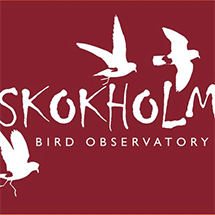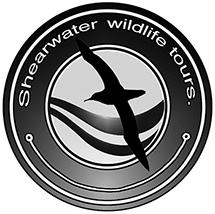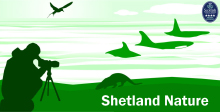Weekly round-up: 03 - 09 Jun 2015
The weather finally did something interesting (at least from a Northern Isles perspective) this week and the easterly door opened (all too briefly) allowing a decent drop of late-spring migrant action. The rest of the country wasn’t hard done by, and some decent colour was to be found the length and breadth of the country. More of which anon.
But first, your headlines...
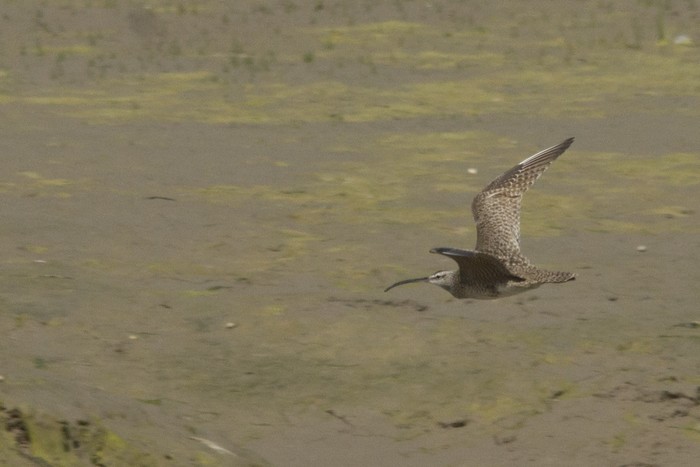
It just goes to show that us writers of your weekly rare bird confection shouldn’t go preparing anything in advance. I’d lovingly crafted some words about how the coming week was good for a rare wader or two and had mentioned, by way of example, Hudsonian Whimbrel. I step away from the keyboard for a bite of lunch on Tuesday 9th and what happens?
Ah yes. A splendid county first is turned up in West Sussex at Church Norton. So not entirely unexpected (there was one in Cumbria in the second week of June 2007) but none the less a proper, top drawer rarity and a stunning find on the south coast – indeed, if we discount Scilly as offshore, this is the south coast’s first ever record of this subtly pleasing Nearctic species.
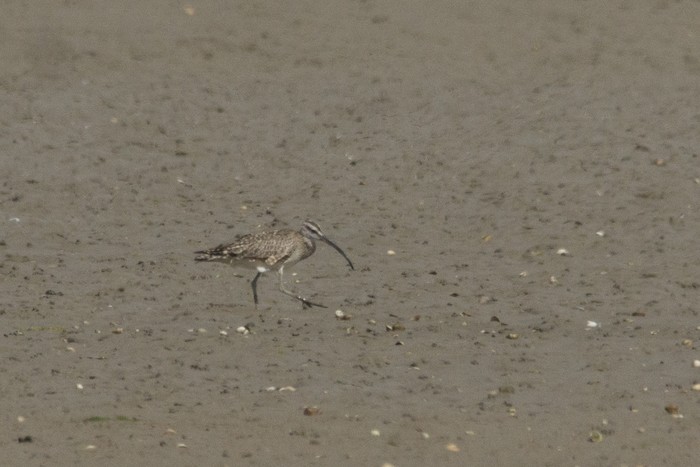
Just the ninth record for Britain (and the fifth away from Shetland) it’s not even the rarest Hudsonian wader of the year…
Accepted Hudsonian Whimbrel records in Britain and Ireland. Taken from our Previous Records Database
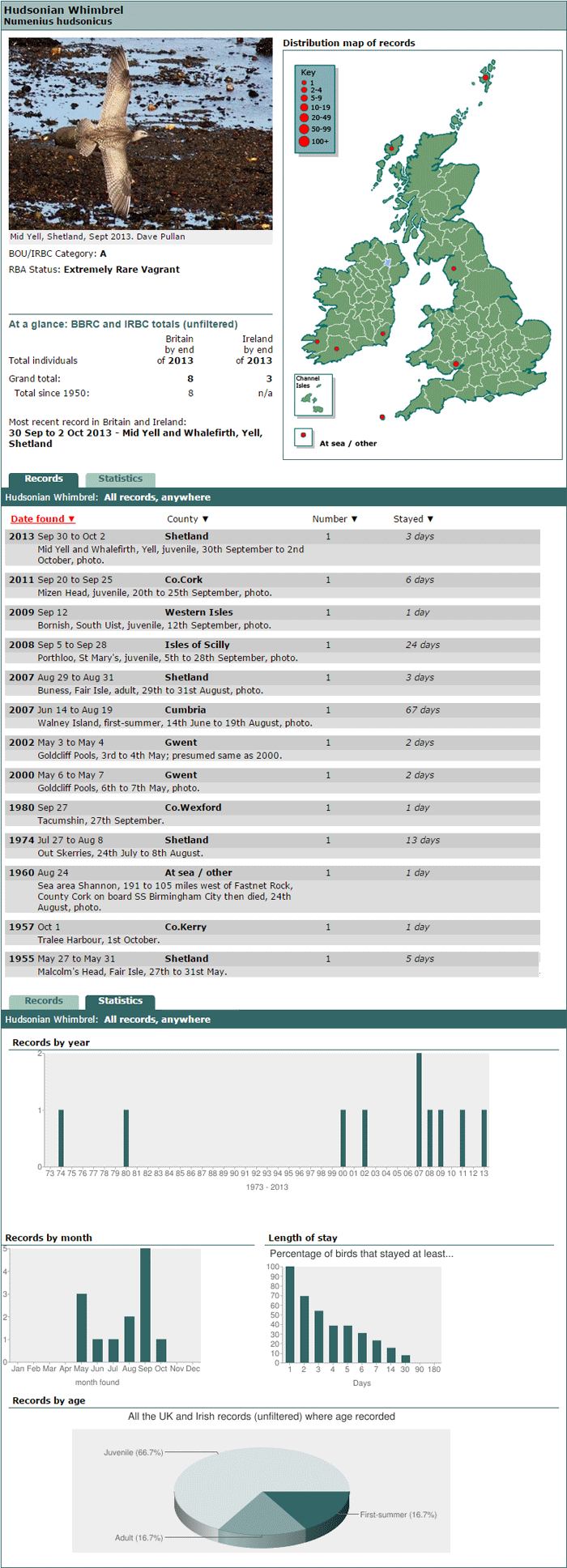
What was, surely, last week’s individual in Northumberland was relocated in Aberdeenshire on 3rd when a Black-winged Pratincole was found at Loch of Skene. Remaining there for the day, it was nowhere to be seen on 4th, begging the question of where else on the east coast this mobile individual would grace with its presence.
With the last record of this smart pratincole species from the county a one day bird way back in July 1976 at Loch of Strathbeg, this was a long overdue second coming for a new generation of Aberdeenshire birders. As mooted in last week’s Round-Up, a repeat of last year’s wandering shenanigans appears to be underway – the smart money being on the next sighting of this splendid wader being somewhere further south down the east coast. The alternative, from my lofty perspective in the far northern isles, being too unlikely (and tantalising) to contemplate…
Not even the first record of the species for the year, following the singing bird on Shetland earlier in May, but the singing Slate-coloured Junco found on Dursey Island (Co.Cork) is none the less remarkable for that – only the fourth record for Ireland (and the third latter-day record following the first bird shot at Loop Head lighthouse in 1905) – and the first record of the species for Co.Cork.
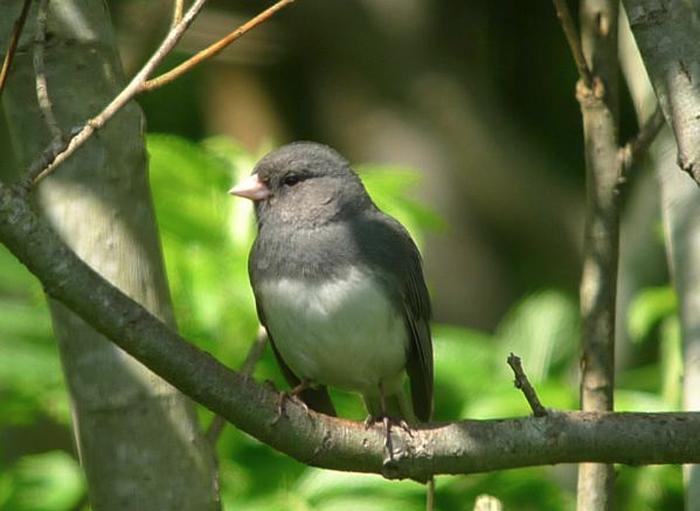
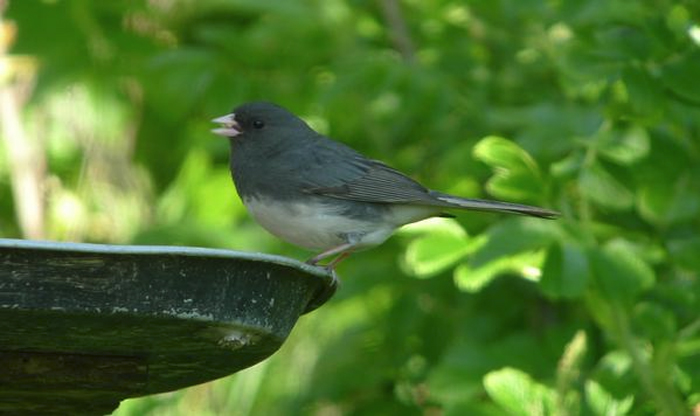
That only three of the previous 41 British and Irish records have come from Ireland is a little surprising; and probably more a reflection of observer coverage rather than any particular bias in distribution. A glance at the map shows a pretty good scatter around the area’s coastal fringes, so it was probably just a matter of time before Co.Cork got in on the action. With most records coming from May (and to a lesser extent, April) this one’s a little late in coming – but after an 11 year absence from Ireland a welcome sight and a cracking find.
When I put my last Rarity Round-Up to bed a fortnight ago I was well-chuffed that I’d got to cover Britain and Ireland’s first spring Grey-cheeked Thrush. A week later and we’d notched up a hat-trick of desirable Catharus loveliness with Swainson’s Thrush and Veery in Pembrokeshire and Orkney respectively. The world had gone delightfully, Octoberishly mad.
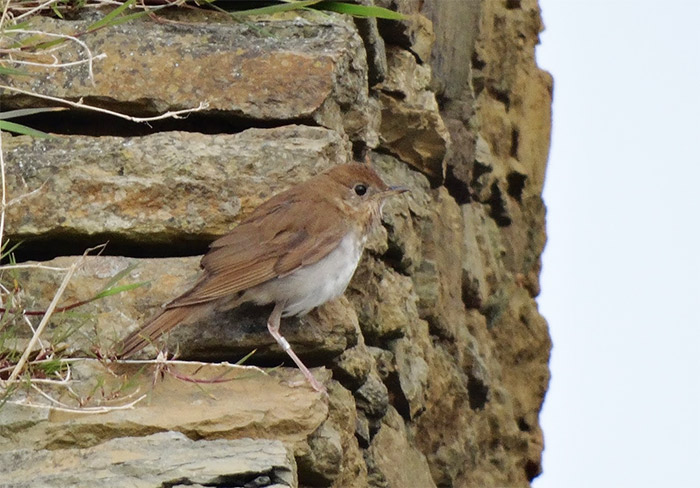
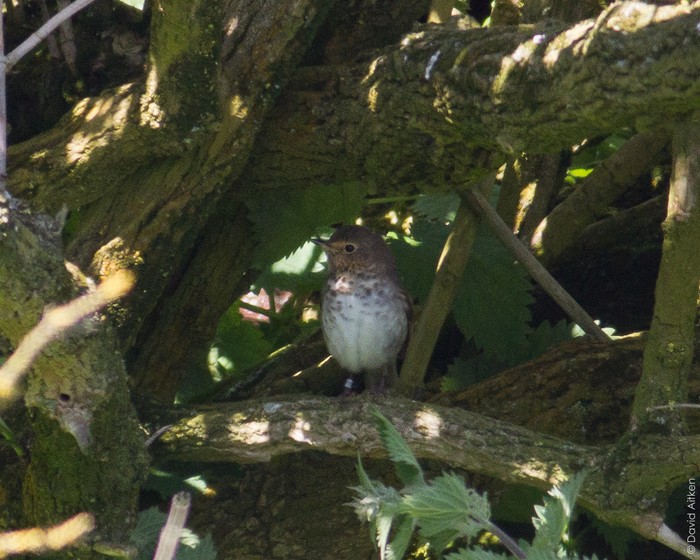
I guess adding a fourth species to the tally the following week was always going to be a big ask, though Hermit was, statistically at least, always a long-shot contender. It didn’t happen, needless to say (though the Slate-coloured Junco raised the Stars’n’Stripes elsewhere), but all the same it’s great to see both of last week’s thrushes lingering into this week... and hopefully beyond.
Both the North Ronaldsay Veery and the Skokholm Swainson’s Thrush remained on their chosen islands all week long, the latter being reported daily and proving twitchable for those prepared to make the effort when access allowed. We’re not quite halfway through June and it already feels like we’ve had a good year for North American passerines. Here’s to plenty more where they came from.
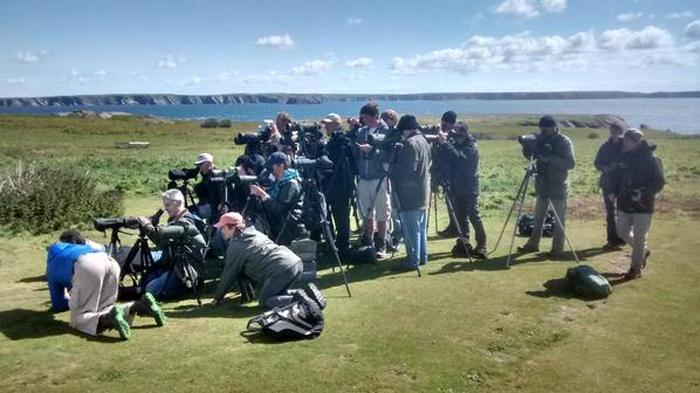
With reports of a Short-toed Eagle emerging from Hampshire’s Stoney Cross Plain on 4th and latterly from Dorset’s Hurn on 6th, Morden Bog NNR on 7th and Stoborough on 8th it felt like déjà vu all over again; it was, after all, only last year that the occasionally confiding individual played hide and seek across the heathlands of the south and east of England after being initially found at Morden Bog NNR on 31st May 2014. Could the same individual be involved?
As we all know, that bird eventually gave itself up for (almost) all comers and, if last week’s reports coalesce into something more concrete, then the speculation from some quarters that it’s only a matter of time before the species becomes an annual event in the UK will seem somewhat less like wishful thinking. Which would be a very welcome sight in our skies indeed, unless you happen to be one of our native snake species, in which case… well, the increase in Short-toed Eagle occurrences will be about as popular as a European guest beer in Nigel Farage’s local.
But for now, we wait to see if these recent reports firm up into something more substantial...
I know, not technically a rarity by the standards of these weekly ramblings, but all the same… the way things are going it soon will be. And if recent events don’t qualify as an opportunity to pull up my soapbox and have a little rant, I really don’t know what does.
As you may be aware, in the past weeks male Hen Harriers have been disappearing from occupied English nest-sites – three had gone missing in the Forest of Bowland (Lancashire). This week saw the announcement that further males had disappeared at Geltsdale in Cumbria and back in Bowland. All the nests concerned have, as a result, failed.
The former Conservation Director at the RSPB, Mark Avery, covers this disgraceful sequence of events in far more detail than our space allows on his blog markavery.info/2015/06/07/mayhem and is championing the species itself while highlighting the persecution it suffers. Critically though, the Government and its agencies appear to be largely ignoring the problem of raptor persecution and hoping those who criticise the culprits (the ‘sport’ shooting set and their misguided and law-breaking employees) will get bored of their campaigning and slip quietly away.
We won’t.

One wonders just what it would take for the shooting industry’s bad apples to get the message that persecuting protected birds of prey isn’t just legally wrong – it’s morally wrong too, and it goes against the tide of public opinion. Lobbying and peaceful protest – not to mention the efforts of those actively investigating these crimes – ought to be enough. But the events of the past weeks appear to fly in the face of all efforts to date. Is the message getting through? Those disappeared five male Hen Harriers would suggest not.
It’s particularly galling when one considers that the bread and butter of the sport shooting industry, Pheasants, are reared in breeding pens and released en masse into the English countryside every year. They’re determined omnivores that have no natural place in the countryside but, released in their countless thousands, will have a significant deleterious effect by both consuming and competing with many native species before they are themselves blasted from the sky. In the name of sport.
The persecution of Hen Harriers is all in the name of providing a good day out for those who seek to shoot Red Grouse. Shooting animals for sport seems pretty morally dubious in and of itself, whether or not they’re captive-reared in the first place. Persecuting wild birds of prey in order to ‘enhance’ the shooting experience of paying guests is abhorrent, and unacceptable.
Anyone who cherishes the natural history of Britain and Ireland should speak out against this appalling behaviour. From hard-core twitcher to armchair Springwatch enthusiast, we need to make our voices and our feelings heard. Have you heard about Hen Harrier Day? Here’s a good place to start to find out more: henharrierday.org
Rant over. For now.
Things were considerably quieter this week where seabirds were concerned, at least insofar as skua passage went. The merest trickle of Pomarine Skuas were noted, with single birds past Selsey Bill (West Sussex) on 3rd and on 6th past Greinetobht, North Uist (Western Isles), Black Head (Co.Clare) and Flamborough (East Yorkshire) – with one more off the latter vantage point on 8th, and one past Spurn (East Yorkshire) on 9th. Long-tailed Skuas presented a similarly denuded picture, with one off Ynysla (Ceredigion) on 3rd, one between Arisaig and Eigg (Highland) also on 3rd, and two birds past Rosslare (Co.Wexford) on 8th.
While skua passage may have been quiet, I am fairly certain that the atmosphere amongst the Shetland Wildlife group who happened across a summer-plumaged White-billed Diver sharing their sheltered lunch spot during a day of foul weather at Eshaness (Shetland) on 5th would have been anything but quiet. Jubiliant, certainly, as said bird performed brilliantly at close range. Another was seen at sea some 20 minutes off Troon on 9th.
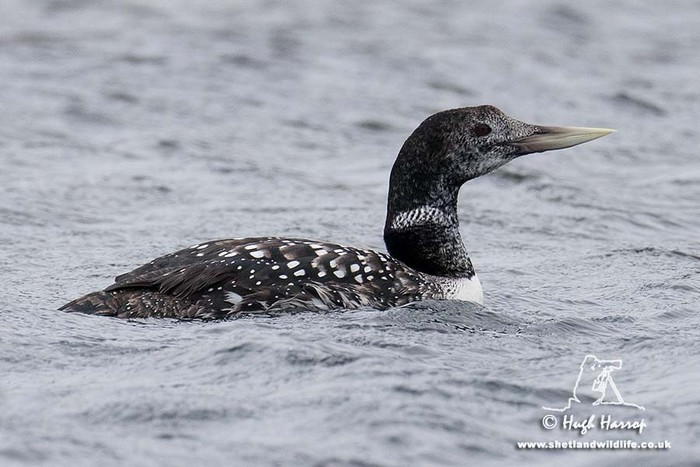
We end the seabird section with no further ado with a Balearic Shearwater off Gorleston-on-Sea (Norfolk) on 3rd.
We kick off all things long-legged-beastie with White Storks - two were seen early in the week over Attenborough (Nottinghamshire) on 4th. A further five possibles flew over Kent’s Capel le Ferne on 6th.
At least one Black Stork was doing the rounds in the southwest, with the week’s first sighting over Newton Abbot (Devon) on 5th. One was seen in Cornwall on 7th over Marazion and Constantine, again on 8th over Penzance and then Nanjizal (amidst a cloud of Red Kites, more of which anon), and reported again on 9th heading over Redruth towards St.Ives. In between which, one was seen from St Mary’s and St Agnes on Scilly on 8th. And then on 9th one was over the fields of St Martin’s back on Scilly. All the same bird? Um, probably... Certainly different were the bird(s) seen early on 9th in Suffolk over Tuddenham St Mary and later on in Lincolnshire at Deeping High Bank.
Something of a stranger in these quarters of late, the Glossy Ibis was again at Tramore (Co.Wexford) on 4th. A further probable sighting came from Bonnyrigg (Lothian) on 9th.
Still very much at home at Lakenheath Fen RSPB (Suffolk) the male Little Bittern continued in residence until 8th. Another male was, unfortunately, found dead on St Mary’s (Scilly) on 9th.
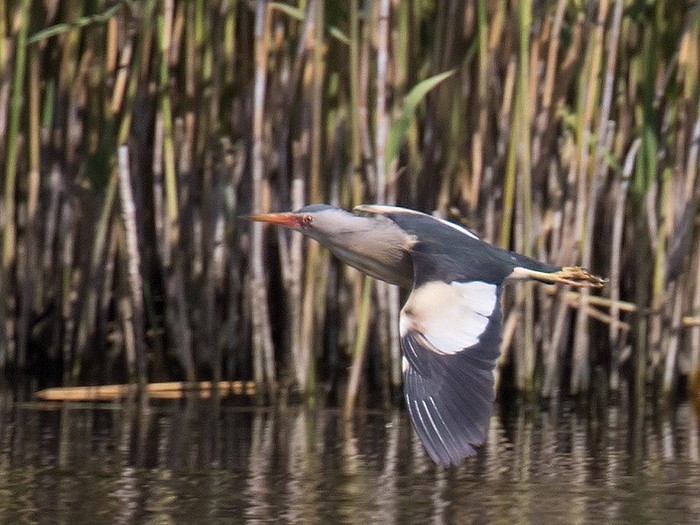
Proving more elusive still was a Night Heron lurking in Somerset at Ham Wall RSPB, seen twice in flight on 4th and 7th. Elsewhere in the county an adult was at Sutton Bingham reservoir on 6th. At least two remained kicking around Scilly, a duo being seen on 8th flying towards Gugh and providing welcome respite for the observers from all those pesky Bee-eaters... and a single bird noted in the evening on 9th at Lower Moors on St Mary’s.
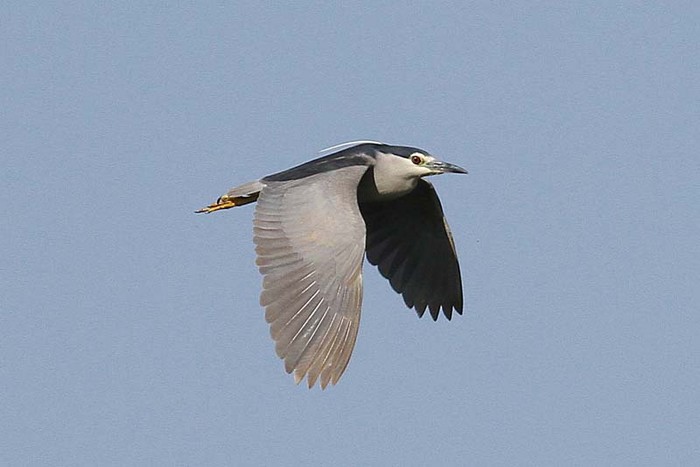
A Squacco Heron was discovered in Cornwall at Marazion Marsh RSPB on 6th, remaining there until 9th.
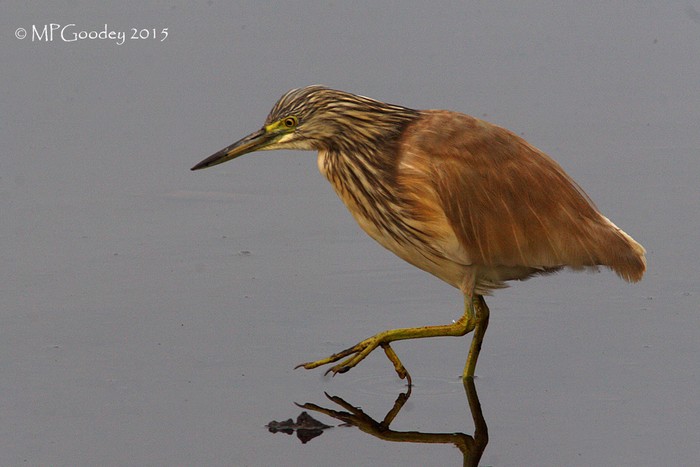
Another comparative stranger of late to these columns are Cattle Egret - good then to chalk up one for the week at Felixstowe (Suffolk) on 8th.
Great White Egrets are getting a little thinner on the ground too, barely scraping into double figures this week. One was at Knapwell (Cambridgeshire) on 3rd; one remained at Minsmere RSPB during the week, with two birds there on 6th; the week’s only Irish bird was at Kilrea (Co.Londonderry) on 5th-7th; also on 5th, one was noted at Wells-next-the-Sea (Norfolk); Brownsea Island (Dorset) accounted for one on 6th, while on 7th birds were seen at Loch of Strathbeg RSPB (Aberdeenshire) and Langford Lowfields RSPB (Nottinghamshire) – the latter bird sharing airspace that day with a Common Crane, and still present there on 9th. On 8th one was in Lancashire at Leighton Moss RSPB, and on 9th one was seen in flight at South Muskham GPs (Nottinghamshire).
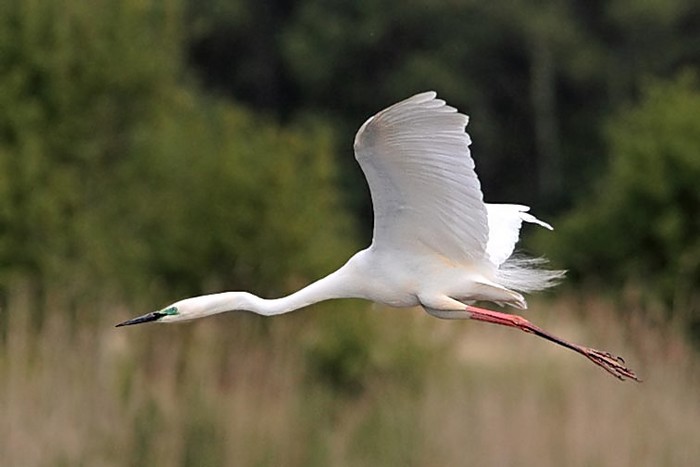
Rather more action was to be had with Spoonbills, with the usual mix of settled and restless souls. Taking things in chronological order, birds remained at Cley (Norfolk) on 3rd-5th (and again on 9th); at Farlington Marshes HWT (Hampshire) on 3rd-7th; at Gibralter Point (Lincolnshire) on 3rd, with three there on 4th-5th and seven on 8th; five immatures still at Pennington Marshes (Hampshire) on 3rd-4th, with one there on 6th and three on 8th; and at Tacumshin (Co.Wexford) still on 3rd-6th.
Salthouse (Norfolk) held a bird on 3rd-7th, with there there on 5th; one was also in the county at Titchwell RSPB on 3rd. On 4th two birds were again at Arne RSPB (Dorset), and two birds were noted in Co.Durham at Bolden Flats NR. Northumberland’s Druridge Pools had two birds on 5th, moving to East Chevington and Cresswell Ponds on 7th and thereafter. Five birds were seen at Warham Greens (Norfolk) on 5th also. One passed over Norfolk’s West Runton on 6th, and four birds were in Suffolk at North Warren RSPB that day – moving latterly to Aldeburgh Marshes in the evening.
Two birds were in Essex at Old Hall Marshes RSPB on 7th, with one that day in East Yorkshire at Hornsea Mere. On 8th two birds passed over Horsey (Norfolk), and sightings came from East Yorkshire at Kilnsea and Sunk Island. On 9th one was again in Cleveland at Saltholme RSPB.
A Common Crane saw in the new week on Scilly, being seen on St Agnes again on 3rd-4th. Nottinghamshire was at the heart of the action as, besides the bird seen over Langford Lowfields RSPB on 7th, a single bird was recorded at Mansfield Woodhouse on 7th and four birds were logged over Burton Joyce on 8th.
The popular singing male Corncrake remained at Hale (Cheshire) throughout the week.
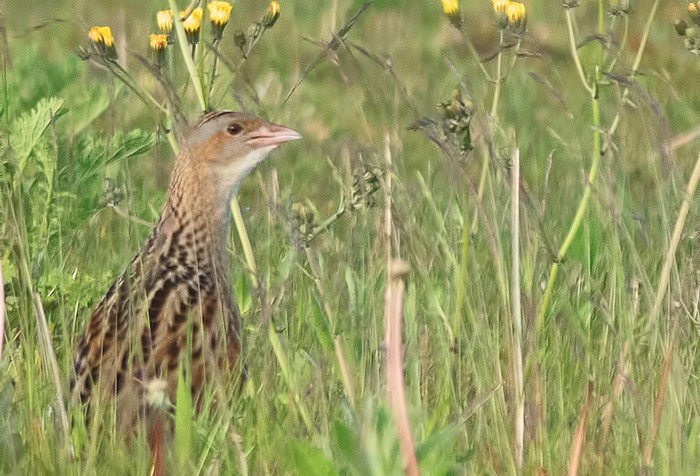
Very, very quiet as we’d expect in quacker corner this week. We’ll rattle through them in quick order then...
The drake American Wigeon was once again in Aberdeenshire at Loch of Strathbeg RSPB on 7th; elsewhere in the county that day a female was on Rigifa Pool.
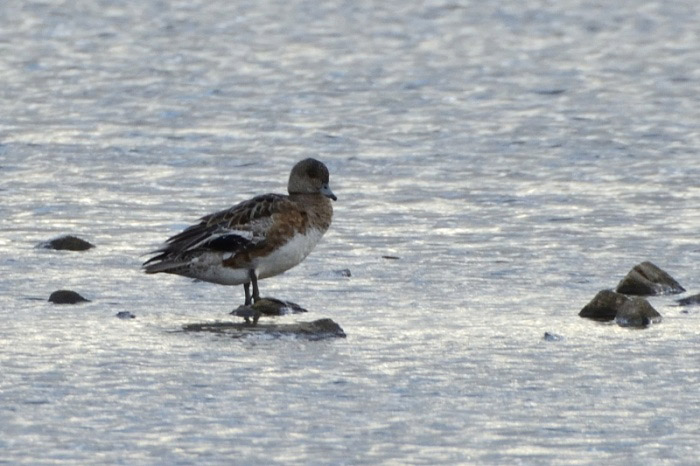
Other Aberdeenshire offerings came in the form of a female Surf Scoter off Murcar again on 4th, and the handsome drake King Eider still happily in situ on the Ythan Estuary throughout the week. Too far away to be of very much practical use to one another was a female King Eider up on Unst at Baltasound on 7th-9th.
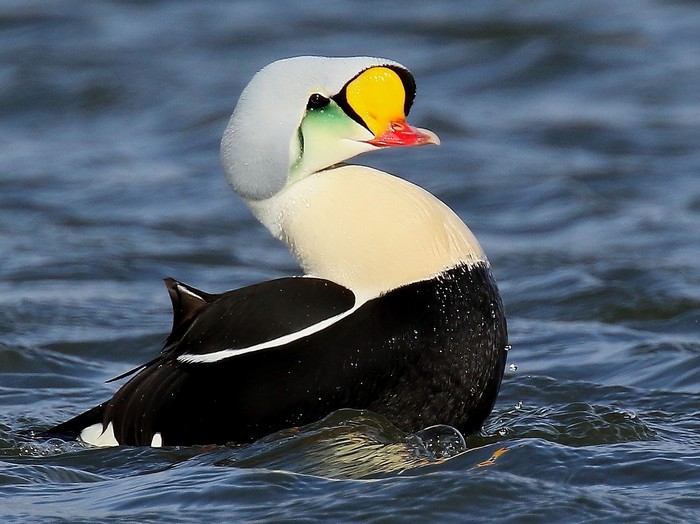
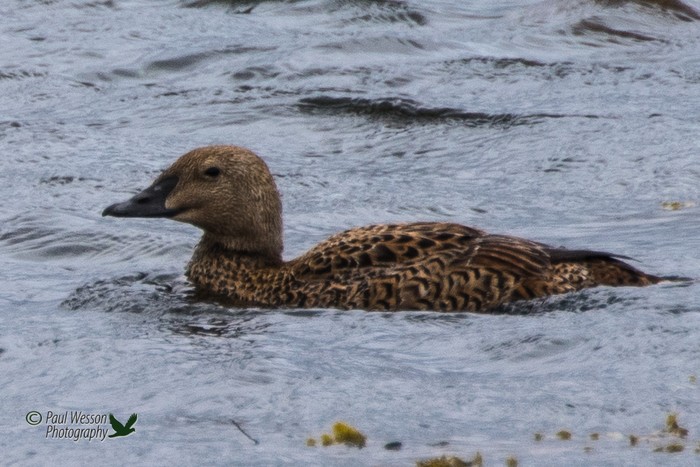
Working our way back south, a drake Ring-necked Duck was on Orkney’s Loch of Skaill on 4th-9th, while down in Derbyshire we find the drake Green-winged Teal still at Carr Vale NR on 3rd.
Making for a pleasing pratincole double with Aberdeenshire’s Black-winged this week was the Collared picked out in Suffolk at the impressive Lakenheath Fen RSPB reserve on 7th-9th. A site first, and still a pukka county rarity with just the three accepted prior records to the end of 2013 (and last year’s bird at Minsmere).

Lincolnshire’s Frampton Marsh RSPB concluded a good week with a brief Broad-billed Sandpiper there on the morning of 9th. Far from the only good wader they’ve enjoyed these past seven days...
The long-staying adult Greater Yellowlegs has now been at Titchfield Haven NNR (Hampshire) for long enough to make one yearn for a nice Lesser just for the sake of variety... Such jaded musings aside, this splendid bird was still present on 9th.
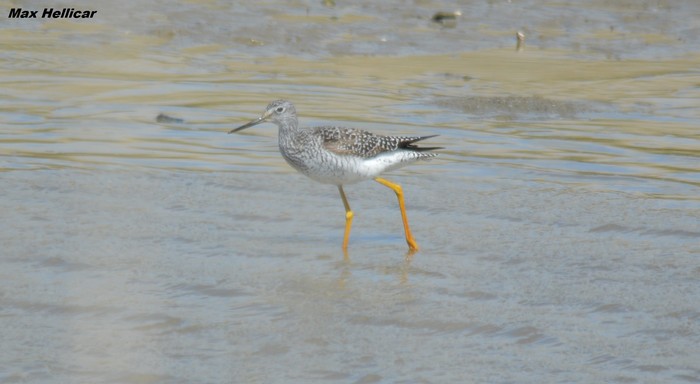
Also lingering from the previous week were the White-rumped Sandpiper in Lincolnshire at Frampton Marsh RSPB until 9th, the Pectoral Sandpiper again at Loch Stiapavat on Lewis (Western Isles) on 7th, and the Black-winged Stilt at Sidlesham Ferry (West Sussex) until 7th. Further Pec Sands were in Orkney at Whitemill Bay on Sanday (you’re having a good week Sanday – we’ve noticed) on 4th and in Ireland at Annestown (Co.Waterford) on 6th.
A female Kentish Plover was at Ynyslas (Ceredigion) on 5th. A good county bird, they’re far from annual there.
Numbers of Temminck’s Stints dropped away sharply by the standards of the last couple of weeks – with just three individuals noted, one at Hatfield Moors (South Yorkshire) on 4th, one at Boldon Bogs NR (Co.Durham) on 6th, and one at Frampton Marsh (Lincolnshire) on 8th.
Red-necked Phalaropes meanwhile continued their brilliant showing this spring with a further smattering of 14 records only one of which concerned a bird rolling over from last week – the individual at Kilnsea (East Yorkshire) remaining there until 6th. The 3rd accounted for roughly half the week’s records, with individuals noted at Alston Reservoirs (Lancashire), Elliot Water (Angus), Blakeney freshmarsh (Norfolk), Burton Mere Wetlands RSPB (Cheshire), Smallways Lake (North Yorkshire) and Widewater Lagoon (West Sussex). One was on Sanday (Orkney) at Whitemill Bay on 4th, and one was in Gwent that day until 5th at Goldcliff Pools NR. One was in Surrey on 6th at Staines reservoirs, with further individuals that day at Martin Mere (Lancashire) and on Lewis (Western Isles) at Butt of Lewis. Lancashire accounted for one on 7th at Newton Marsh and the week’s sole Irish bird was seen that day at Broad Lough (Co.Wicklow). One was at Drongan (Ayrshire) on 8th. Two were on Skokholm (Pembrokeshire) on 9th, with one found at Langford Lowfields RSPB (Nottinghamshire) that day.
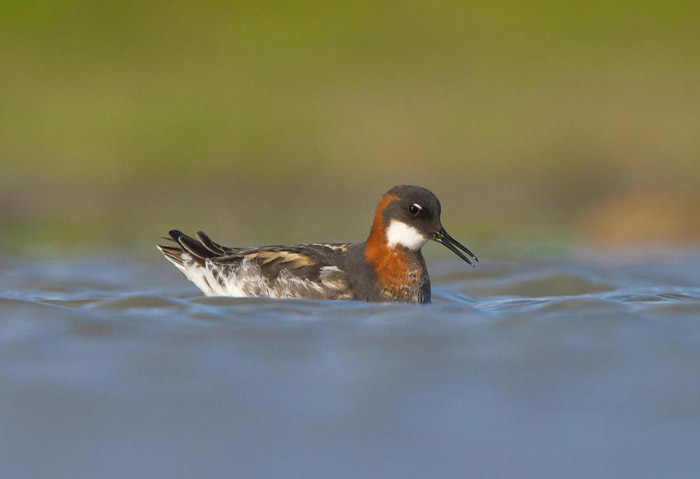
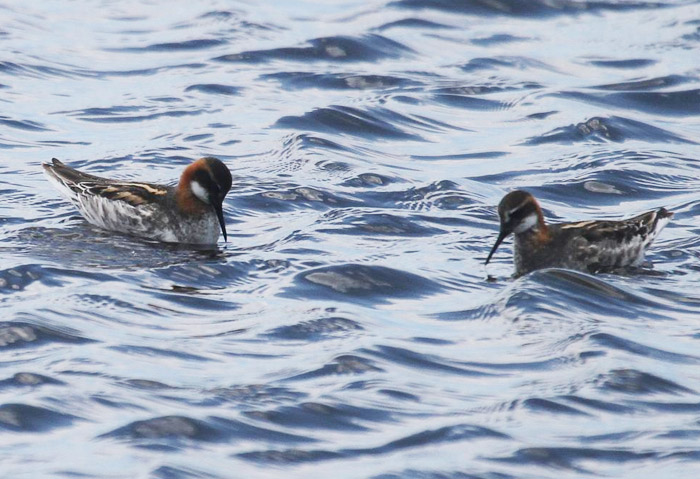
The week began with the White-winged Black Tern still at Swineham GPs (Dorset) on 3rd-4th; rarer tern fare was to be had in Ireland on 5th with an adult Forster’s Tern in Co.Galway on Fiddaun Island.
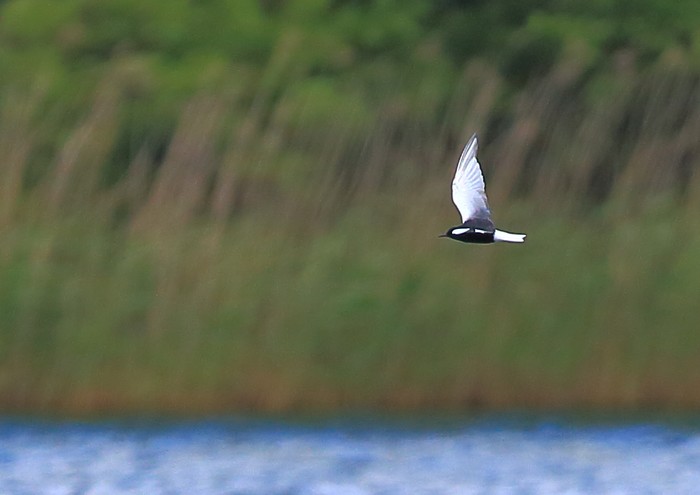
Hayle’s settled first-summer Ring-billed Gull remained on the estuary all week, and was the species’ sole representative in the news in a generally quiet week for larids.
Just three Glaucous Gulls were reported – one still at Seaton Common (Cleveland) until 8th, one at Peninerine on South Uist (Western Isles) on 4th, and one on Fair Isle (Shetland) on 4th-5th.
A better showing from Iceland Gulls, but with some 17 excusively Scottish birds logged this represents about half of what was to be seen the previous week – understandably as summer comes upon us. On 3rd-5th one was on Iona (Argyll); on 3rd-7th one remained on the Lossie Estuary (Moray); and elsewhere on 3rd birds were noted at Cottascarth (Orkney), Loch Bale on North Uist (Western Isles), and Rerwick (Shetland). On 4th birds remained on Shetland at Loch of Hillwell and on Skye at Uig (Highland). Two birds were on Lewis (Western Isles) at Butt of Lewis on 6th, with one still there the following day. One was was Bay of Skaill (Orkney) on 6th still with three birds there the following day. Elsewhere on 7th one was still at Yesnaby (Orkney), and further individuals were noted at Marwick (Orkney), Scrabster (Highland) and Arbroath (Angus). On 9th on was seen on Tiree (Argyll).
A juvenile Kumlien’s Gull was on Tory Island (Co.Donegal) on 6th-7th.
A little more action this week where Red-footed Falcons were concerned, with six records suggesting the pace may be picking up a little where vagrancy into Western Europe’s concerned this year. The week started with the female still at Barcombe Mills (East Sussex) until 5th, with one noted not a million miles away at Dungeness (Kent) on 4th.
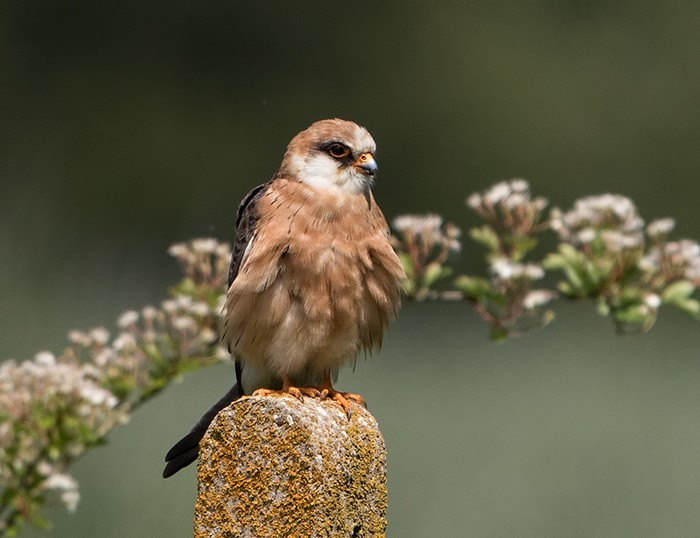
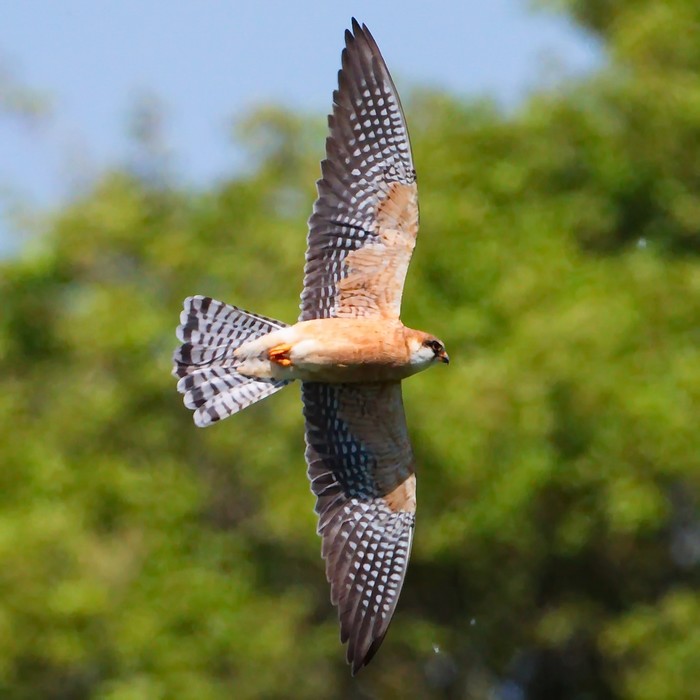
Four further birds were seen: on 5th, a female reported west over Fowlmere (Cambridgeshire), a female at Hemsby (Norfolk) and a male at Kilmurrin (Co.Waterford) were all recorded; and on 7th a first-summer male was seen over the mouth of the River Nene in Lincolnshire. A probable female was reported on 8th from Chatteris (Cambridgeshire).
Once again, not much was happening with Black Kites - a possible was reported on 4th from Surlingham Church Marsh RSPB (in Norfolk - is there an RSPB reserve with a longer name, I idly wonder...), and further individuals noted over Wykeham Forest (North Yorkshire) on 5th and Ford End (Essex) on 7th.
After events of 8th in Cornwall I’m left in no doubt what the collective noun for a shedload of Red Kites is – it’s a Nanjizal of Red Kites. While we’re collectively getting accustomed to seeing these graceful raptors in our skies once again (and I’m sure I’m not the only one who’s been badly distracted driving along the M40 watching the skies and not the road), little could have prepared Cornish birders for the influx on Monday. Over 50 seen over Marazion would, in any other circumstances, have passed for notable – but were but a pale shadow of the numbers logged at Nanjizal that day with at least 186 seen overhead, including a flock of 80 birds!

As if that wasn’t bonkers enough, the following day over 50 birds had passed over Pembrokeshire’s Ramsey Island by midday; while in West Penwith Cornish birders were practically knee deep in the things – 166 birds were circling in the morning over Nanquidno valley...
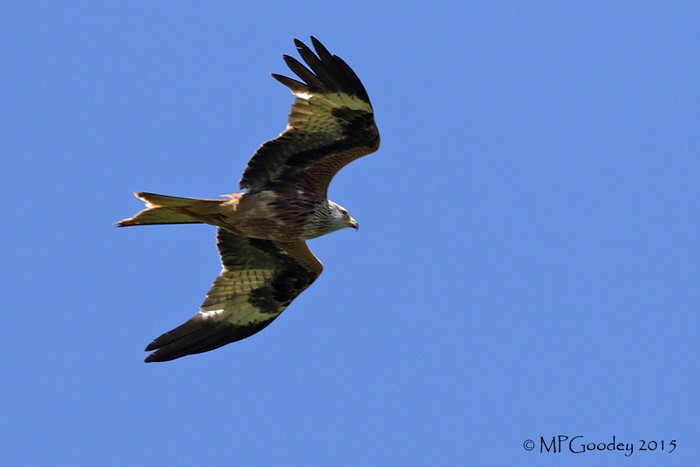
Wykeham Forest (North Yorkshire) dominated the reports of Honey Buzzards with one over there on 4th, three the following day, and one again on 9th. Elsewhere, one was over Eastfield (North Yorkshire) on 3rd; one again over the Welbeck watchpoint (Nottinghamshire) on 3rd, with two there on 6th and a single again on 7th-8th; on 4th individuals were noted over Ingbirchworth Reservoir (South Yorkshire) and Portland (Dorset); and on 7th one was over Northrepps (Norfolk).
News from Blacktoft Sands RSPB (Lincolnshire) this week concerned just the male Montagu’s Harrier reported still on all week long... Other Monties were a ringtail at Titchwell (Norfolk) on 3rd, a male over Littlebourne (Kent) on 4th, and a first-summer bird at Gibralter Point (Lincolnshire) on 9th.
There’s absolutely no doubt what leads the charge for the passerines this week – by no means the rarest species on offer, but for sheer quantity and crowd-pleasing loveliness there’s nothing to touch the influx of Bee-eaters that ran all through the week.
There was a distinctly (but not exclusively) southwesterly flavour to proceedings from the very start; on 3rd singles were noted at Land’s End (Cornwall), Sidmouth (Devon) and West Bexington (Dorset – with a further two birds in the east that day at Blakeney (Norfolk). On 4th two birds were seen on Scilly on Bryher; four birds were in Cornwall at Porthgwarra; two were noted at Hinchwick (Gloucestershire); and two were at Betchworth (Surrey).
There was no let up in the sightings on 5th or 6th, with multiple birds again recorded. On 5th in Cornwall two birds were at Maenporth and four individuals were at Mawgan; back in Norfolk two were noted at Winterton Dunes; a single bird was noted in East Yorkshire at Kilnsea (with it or another there again on 7th); and in Lincolnshire one was at Rimac and six were at Chamber’s Farm Wood NR. On 6th at least one was heard in Cornwall over Siblyback Reservoir, while in Devon five birds were at Bradworthy and, back on Scilly, four birds appeared to flit between the islands, reported from St Mary’s, St Agnes and Gugh; one was in Kent at Cliftonville; and back in East Yorkshire one was at Spurn and five were noted first at Flamborough Head and latterly Bridlington.
On Sunday 7th it was clear that birds were further penetrating the region, with records of single birds coming from Hauxley (Northumberland) and the first from Ireland with one at Ballyrobin (Co.Antrim); back in the southwest, Somerset got in on the action with one at Saltford and four birds at Gotton; and in West Sussex one was seen at Southwick. Two were reported from Dingle (Suffolk) on 8th, while in Cornwall one was at Seaton and two were again in the Land’s End area. Meanwhile on Scilly numbers were rising on St Agnes, with a flock of 12 birds there into the evening and still present the following day. The 9th also accounted for a flock of six on overhead wires in Somerset at Woolley.
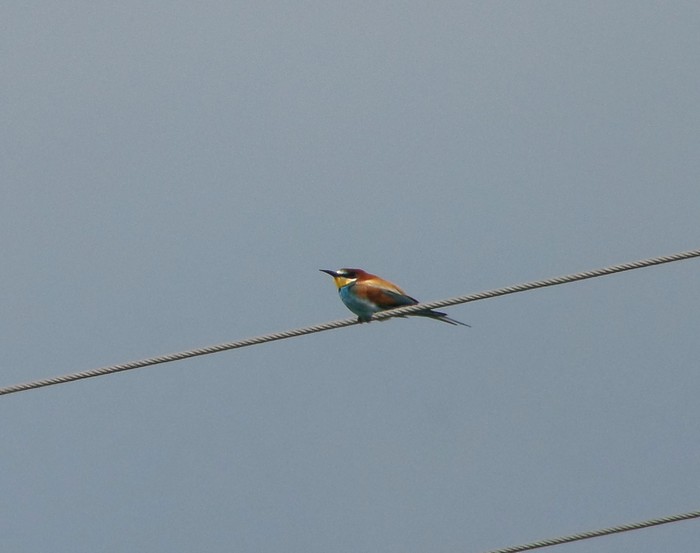
While the one doesn’t necessarily follow the other, it’s tempting to speculate that with this many Bee-eaters swilling around there may be another breeding attempt in the offing...
As noted in the Round-Up’s preamble, it was finally the Northern Isles’ turn to continue to roar this week – and while there was nothing of an exceptional nature to report, good numbers of Greenish and Icterine Warblers and Red-backed Shrikes give a flavour for how much improved the fortunes of Shetland birders had become lately.
Kicking off then with the warblers, with the exception of singing individuals on Sanday (Orkney) on 3rd and way down on St Martin’s (Scilly) on 4th, it was all about Shetland this week where Greenish Warblers were concerned with seven individuals logged. Two birds were on Fair Isle on 3rd-5th; singles were at Swining and on Foula on 5th, and in the Swinister Burn on 5th-6th; one was one Out Skerries on 6th; and one was a few hundred yards from home for me at Skaw on Whalsay on 8th.
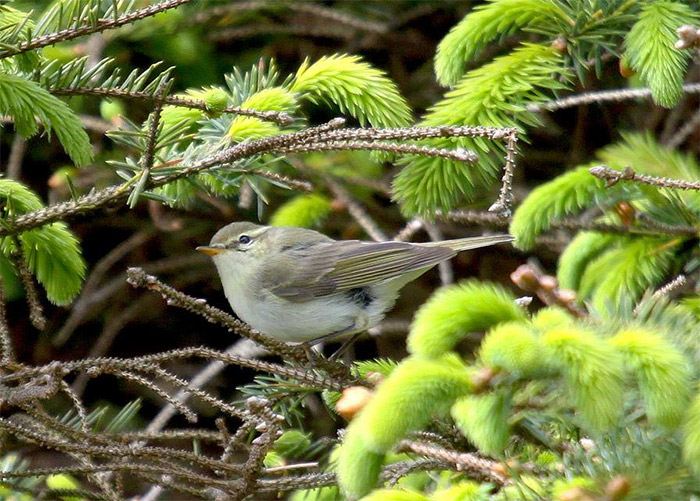
A similar story where Icterine Warblers were concerned, with the lion’s share very much in Shetland, with double figures reported. One remained on Out Skerries on 3rd-6th, with further individuals on 3rd at Pool of Virkie, Quendale, Spiggie, Grutness and Fair Isle (with two birds at the latter site on 4th-5th and one still there until 8th). On 4th-6th one was singing at Helendale in the heart of suburban Lerwick. On 5th two were on Foula; on 6th on Unst one was at Baltasound and two were at Norwick, and on Mainland one was at Swinister. On 7th one was at Kergord on Mainland, and one was at Grutness on 8th.
Orkney accounted for two more birds, with individuals on Sanday and North Ronaldsay on 4th-5th and 6th-7th respectively. On the Scottish mainland one was trapped and ringed at Melvich (Highland) on 5th, and one was in song in Aberdeenshire at Crathie on 8th-9th. A further bird was trapped and ringed in England at Kintbury (Berkshire) on 6th.
It wasn’t quite Acrocephalus Now yet in Shetland with a mere handful of Marsh Warblers playing understudy to a Blyth’s Reed Warbler on Fair Isle on 8th and a Great Reed Warbler on Unst at Baltasound on 3rd-9th – single Marshes being noted on Mainland at Mossbank and on Unst at Skaw on 6th-8th and Norwick on 8th; one bird on Fair Isle on 3rd rising to two there on 6th; and one at Sumburgh on 9th. Away from Shetland one was in Shropshire at Priorslee Lake on 5th-6th, and one was in song in Norfolk at Narborough on 9th.
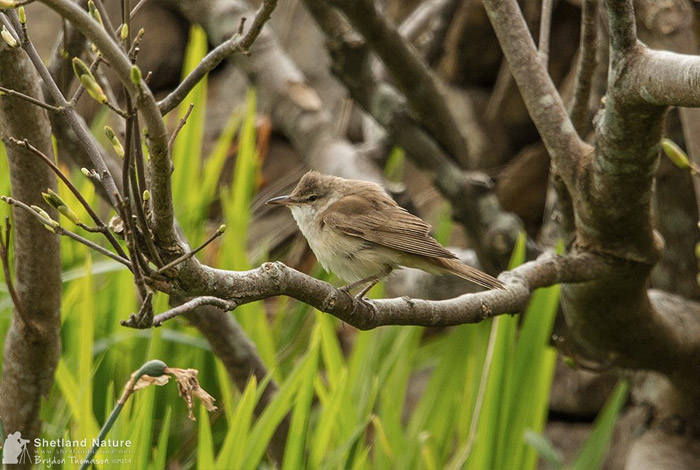
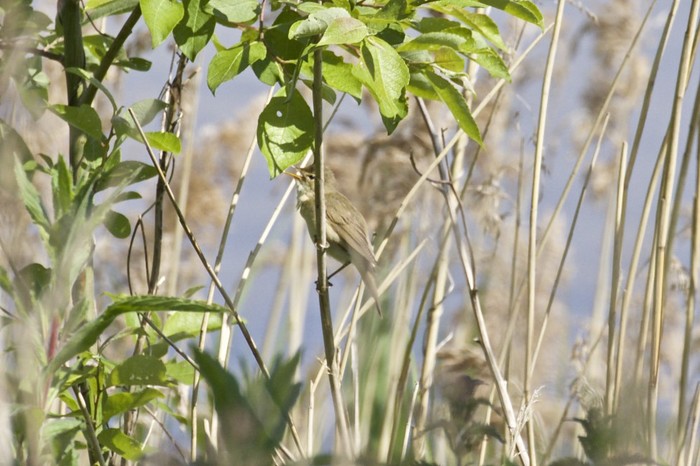
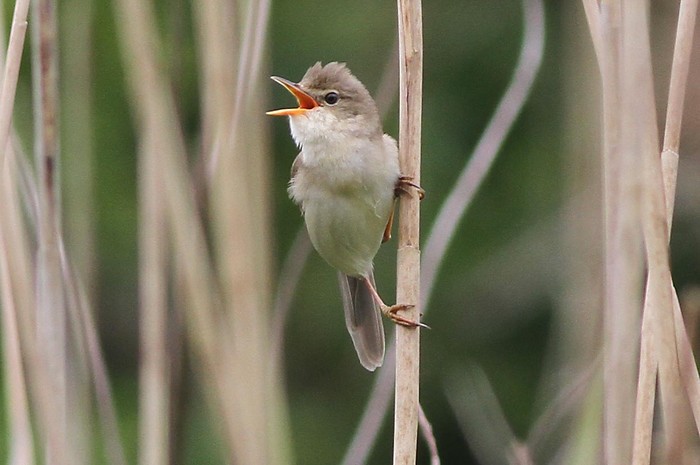
An unobligingly silent male Subalpine Warbler beside the visitor centre at Balranald RSPB on North Uist (Western Isles) defied specific identification on 4th – thought to perhaps be Moltoni’s, without a call (or a handy DNA sample) this one remains a cracking find but frustratingly undetermined.
Red-backed Shrikes were almost exclusively the preserve of Orkney and Shetland during the week, but for a possible bird at Pinewood GPs (Berkshire) on 3rd and one at Westfield (East Sussex) on 6th. On Orkney, one was on Sanday on 3rd with two birds there on 5th; reports came from North Ronalday on 5th and 7th, and from Westray on 7th also.
In Shetland, the week started with one still on Fair Isle on 3rd, with at least three birds on the island at various points through the week. Three birds were in the Baltasound area of Unst on 3rd, with one there on 6th; nearby on 3rd one remained at Northdale. One was on Out Skerries on 5th-6th, with one on Foula on 5th. Back on Unst on 6th birds were noted on 6th at Skaw and Norwick. One was on the Mainland at Boddam on 9th.
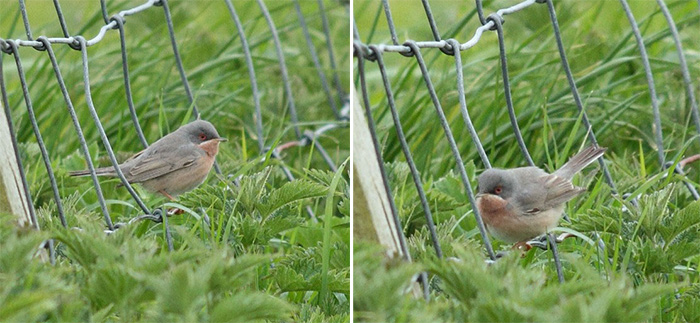
A probable Woodchat Shrike was seen in Co.Durham at Whitburn Coastal Park on 3rd.
Our headlines this week could have been so very different if either of the two reports of Pacific Swift this week had firmed up into something more substantial: a probable was seen over Hale (Cheshire) on 3rd, with a possible bird over Barmston (East Yorkshire) on 7th. Further intangible swift action came in the form of a possible Alpine Swift over Mundesley (Norfolk) on 5th and one reported over Dudley (Northumberland) on 6th.
At last though on 7th, a confirmed swift sighting! An Alpine Swift over Spurn (East Yorkshire). Equally tangible were single Red-rumped Swallows on 7th at Landguard NR (Suffolk), and on 8th in Orkney at Marwick Bay and over Spurn (East Yorkshire).
Golden Orioles remained fairly thin on the ground this week, with birds in song reported from Forres (Moray) still on 3rd-4th, in Gosforth Park NR (Northumberland) on 3rd-4th also, and on 5th at Market Walsop (Nottinghamshire) and Northward Hill RSPB (Kent). Further individuals were noted in the Western Isles on Benbecula at Griminish on 6th and on 8th at Halligarth on Unst (Shetland) (and still there on 9th), at Langais on North Uist (Western Isles), and reported as heard at Newport Wetlands (Gwent) that day also.
A probable Wryneck was heard on 8th at Knockdolian (Ayrshire), but was not seen.
A possible Rose-coloured Starling was seen on Worth Marsh (Kent) on 5th from a moving train.
A Short-toed Lark was found on Gugh (Scilly) on 9th, cementing a rather brilliant late spring week for St Agnes and Gugh in particular.
Our island stations provided two of the week’s perhaps more autumnal-feeling offerings on 5th, with a Red-breasted Flycatcher trapped and ringed on Bardsey (Gwynedd) and an Olive-backed Pipit an excellent spring find on North Ronaldsay (Orkney), continuing the latter’s fine run of form of late.
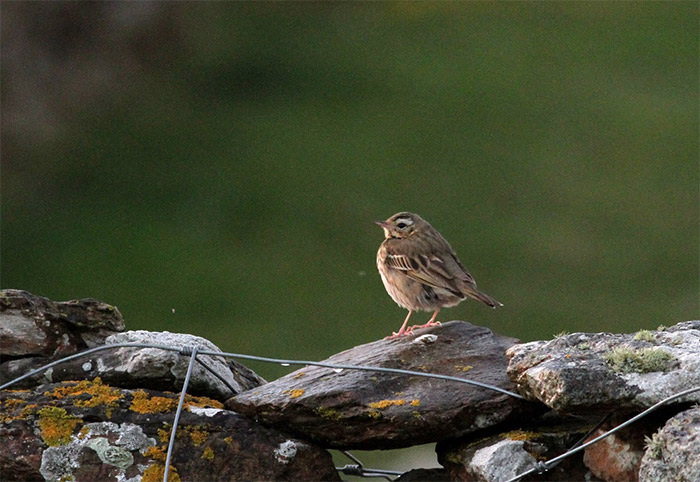
Unst (Shetland) mustered a Grey-headed Wagtail on 7th at Haroldswick; further south, reports of Spanish Wagtail came from Bryher (Scilly) on 4th and a possible at South Huish Marsh (Devon) on 7th-8th; with a possible Blue-headed (or Channel Wagtail) in Dorset at Sherborne on 8th.
A handful of Bluethroats made the news, with Shetland providing singles on Fair Isle on 3rd and Foula on 5th, and Orkney singles on North Ronaldsay on 3rd and 5th (trapped and ringed on the latter date) and on South Ronaldsay on 4th.
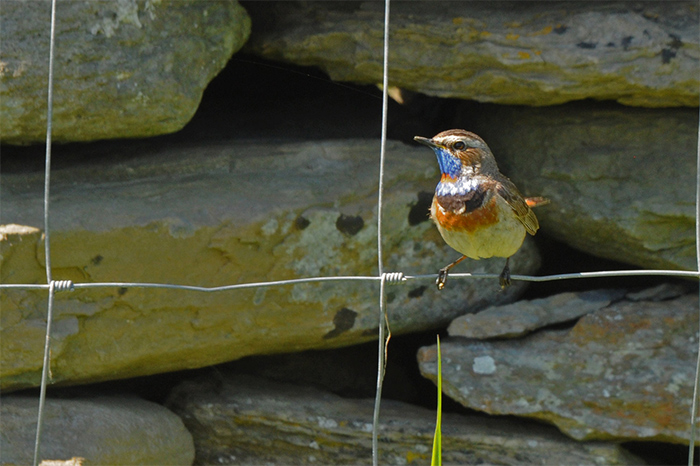
More traditional late spring fare came nationwide in the form of a good showing of Common Rosefinches, with many of them feeling the sap rising and creaking into what passes for song where they’re concerned. On 3rd one was in song at Spiggie and two were at Pool of Virkie (both Shetland). On 5th two more were in Shetland on Foula, while one was in Fife on the Isle of May. Dorset accounted for reports on 6th singing on Portland and at Radipole RSPB, with both birds still in song on 9th. Elsewhere on 7th birds were in song in Co.Durham at Whitburn Coastal Park and Seaburn, and further individuals were noted offshore on Bardsey (Gwynedd) and on the Saltee Islands (Co.Wexford). On 8th, one was at Hamister on Whalsay (Shetland), one was singing on Flamborough Head (East Yorkshire), and one was in Highland at Latheronwheel. The Flamborough individual was still in song on 9th.
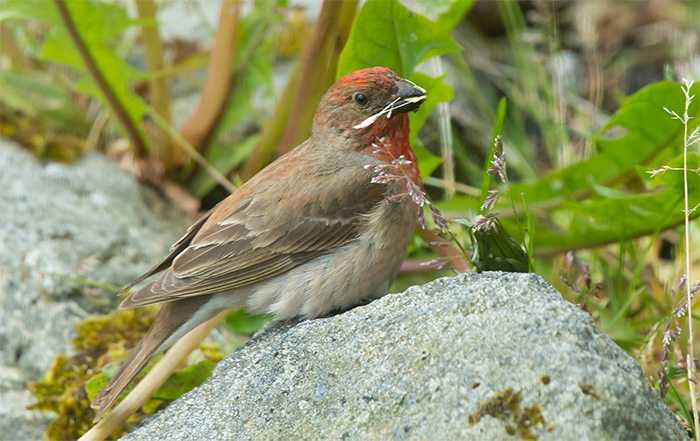
Dungeness (Kent) provided the week’s only report of a Serin, with one there on 4th.
And we bring the passerines to a close with Skomer pulling ahead of Skokholm 5-4 where records of Black-headed Buntings on Pembrokeshire’s famous islands are concerned. It’s been a dead heat on four records apiece since the last on Skomer in September 2004. The male on Skomer on 7th changes that scoreline for now.
And that brings us neatly to the end of another week’s goings on. A week that finally felt like spring had sprung up here in the far north, while the rest of the country will have felt far from short-changed also. What now for the coming days of blazing June?
We’re still firmly in the territory of Red-footed Falcon arrivals, and based on the past week we’ll be expecting some more of these dashing raptors in the coming days.
Recent years suggest it’s time to start scanning the sea for rare scoters, particularly off the Aberdeenshire coast – a first-summer male White-winged Scoter was off Murcar for almost a fortnight from 11th June 2011, and a first-summer male Black Scoter was off there for three weeks from 14th June 2012.
The statistics suggest time on the coast will be time well-spent in the coming days for anyone hoping to find a rare tern, with all the usual suspects in the frame as possibilities. We’re also very much in the timeframe for a stand-out wader – Greater Sand Plover (Highland, 2011), White-tailed Plover (Lancashire, 2007), Hudsonian Whimbrel (Cumbria, also 2007) and Long-toed Stint (Co.Cork, 1996) all having occurred in the coming week. I went for the latter – my first (and rather chastening!) experience of twitching Ireland. We’ve had the Hudsonian Whimbrel in the past 24 hours at time of writing – but what of any of the rest of them?
The big one, as they say, travels late and alone, and how better to conclude this week’s wishful thinking than with a reverential nod to two of the last century’s absolute monsters?
A lot of years have elapsed since the Rock Sparrow at Cley (Norfolk) on 14th June 1981 and the single observer Egyptian Nightjar on Portland (Dorset) on 10th June 1984. With the immediacy of modern communications what it is nowadays, a repeat of either would almost certainly be enjoyed by rather more people than way back in those quaint times of public telephone boxes sited inconveniently far away from those fortunate enough to find such earth-shattering birds. Assuming, of course, the bird in question plays ball and sticks around...
Jon Dunn
10 Jun 2015
Please check out our contributor's websites for more superb birding photos, videos and more.










